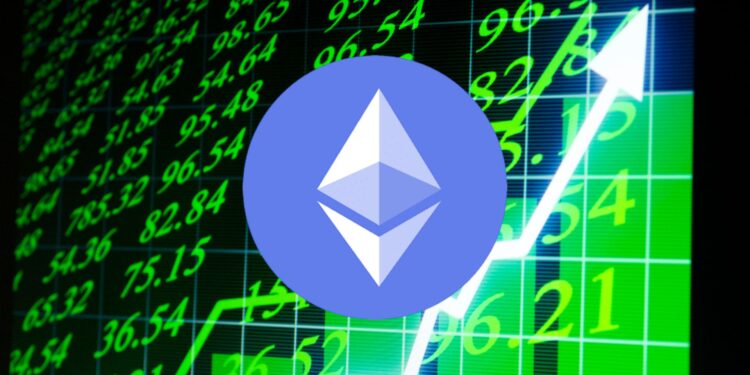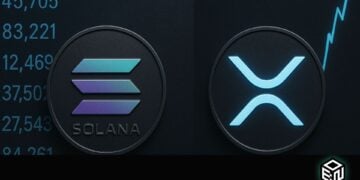- Volatility Incoming? Ethereum’s implied volatility is near historic lows, signaling a possible breakout in April, according to Derive’s Nick Forster.
- ETF & Outflows Clash: Despite bullish developments like bank-issued stablecoins and potential ETF filings, Ethereum ETFs have seen 12 straight days of outflows totaling $370M.
- Mixed Sentiment: Short-term market sentiment favors Bitcoin, but upcoming Ethereum upgrades like Pectra may reignite institutional interest later in 2025.
Ethereum’s been a bit… quiet lately. But don’t get too comfy. According to Derive, a decentralized options platform, the calm might just be the setup before a storm. They’re spotting a few signs that a breakout’s brewing—even if the short-term looks kinda shaky.
“Low Volatility? Yeah, That Won’t Last”
Nick Forster, Derive’s founder, told Decrypt that Ethereum’s implied volatility is currently scraping the bottom of the barrel—hovering at monthly lows. The 7-day and 30-day vol numbers sit at 59% and 45%, respectively.
“Historically, such low levels rarely hold,” Forster said. “April could get wild.”
And he might be onto something. Forster pointed out that when volatility gets this low, it usually ends with prices snapping hard one way or the other. The lull, as they say, never lasts.
Custodia Drops a Stablecoin—Yep, on Ethereum
Meanwhile, Custodia Bank just did something pretty interesting. Teaming up with Vantage Bank, they launched their own stablecoin—called Avit—on Ethereum’s mainnet. It’s being dubbed the first bank-issued stablecoin on a permissionless blockchain.
Eight transactions. That’s how many it took to get Avit on-chain. Custodia handled the blockchain stuff (of course), while Vantage did the old-school banking side—FedWire, ACH, all that jazz.
So yeah, Ethereum’s still the playground for the grown-ups, too.
Wait, Forward Rates Are… Low?
Despite all this, there’s a weird mismatch going on. Ethereum’s forward rate—the thing that kind of guesses future value—is sitting below the U.S. 5% Treasury rate. Not great, right?
Well… maybe.
“When forward rates are this low, we often see sharp price increases in the following weeks,” Forster explained. It’s basically a setup where leveraged traders get more aggressive, and boom—demand kicks in.
Also worth noting: ETH’s circulating supply on centralized exchanges is at a nine-year low. So if buying pressure spikes, there’s less supply to go around, which could really amplify any price move.
A Dip or a Pop?
According to Derive, there’s about a 30% chance ETH dips below $1,800 by the end of May. But there’s also a 19% shot it rips past $2,500. So, yeah—pretty wide range.
And in case you missed it, Ethereum ETFs haven’t been looking too hot lately. They’ve seen 12 straight days of outflows—$370 million gone. iShares and Grayscale’s ETH funds alone shed $146M and $106M, respectively.
Bitcoin Holds Steady—But Others Are Making Moves
Bitcoin, for now, looks a bit more solid. Derive’s data gives it a 33% chance of falling under $80K, and a 20% shot of hitting six figures by May.
But the buzz isn’t just around BTC and ETH. XRP’s getting some spotlight again after the SEC finally backed off Ripple. There’s talk of ETF applications tied to XRP, which could mean up to $8 billion in fresh inflows if greenlit.
Then there’s Solana. Fidelity’s Delaware trust filing might turn into a full-blown spot ETF, which would be a huge institutional nod.
Last week alone, Ethereum saw $86M in outflows. Meanwhile? Bitcoin had $724M in inflows. Ouch.
What’s Next for ETH?
Short term? Looks like Bitcoin’s got the edge. But Forster says don’t sleep on Ethereum just yet. The Etherealize project and that upcoming Pectra upgrade might just be the catalysts that bring the big players back later in 2025.
The chess pieces are moving. And Ethereum’s not out of the game—just waiting for the right time to strike.














